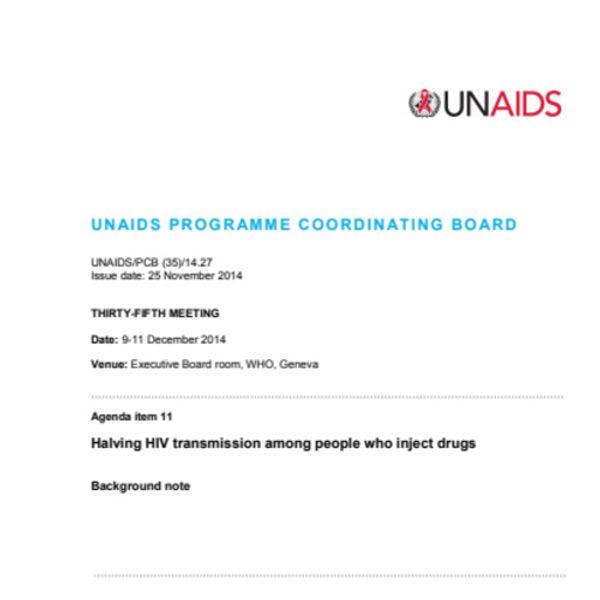Reducir a la mitad la transmisión del VIH entre las personas que se inyectan drogas
Tres décadas de datos de investigación científica evidencian la eficacia y la rentabilidad de los servicios de reducción de daños y del derecho a la salud para las personas que se inyectan drogas.Más información, en inglés, está disponible abajo.
Suscríbase a las Alertas mensuales del IDPC para recibir información sobre cuestiones relacionadas con políticas sobre drogas.
At its 34th meeting, the UNAIDS Board, called for Member States and the UN Joint Programme to pursue, in line with the UNAIDS vision of the three zeros, a clear commitment in the post-2015 development agenda to ending the AIDS epidemic as a public health threat and an obstacle for overall sustainable development by 2030, provisionally defined as the rapid reduction of new HIV infections, stigma and discrimination experienced by people living with HIV and vulnerable populations and key populations, and AIDS-related deaths by 90% of 2010 levels, through evidence based interventions to include universal access to HIV prevention, treatment, care, and support, such that AIDS no longer represents a major threat to any population or country. A process of establishing new targets for 2020 and 2030 is underway, within which targets and commitments on reducing HIV transmission among people who inject drugs will be considered.
There is now three decades of available scientific research data assessing the evidence regarding the effectiveness and cost effectiveness of harm reduction services and the right to health for people who inject drugs. This data shows that evidence-based harm reduction interventions such as Needle and Syringe Programmes (NSP) and Opioid Substitution Therapy (OST) are effective, pragmatic and cost effective—provided they are delivered in a way which is accessible and acceptable to people who inject drugs, for example at sufficient scale. Nevertheless, in many countries this evidence has not been translated into programmes of sufficient size or reach.
Keep up-to-date with drug policy developments by subscribing to the IDPC Monthly Alert.
Regiones
Perfiles relacionados
- Joint United Nations Programme on HIV and AIDS (UNAIDS)
